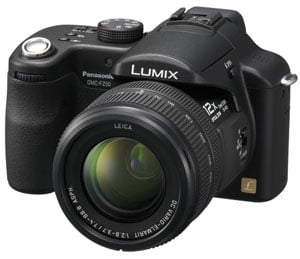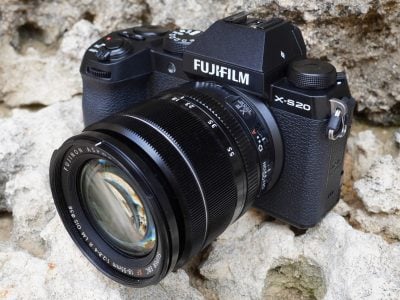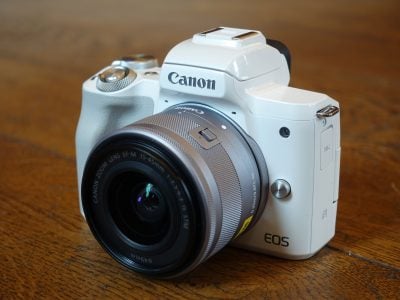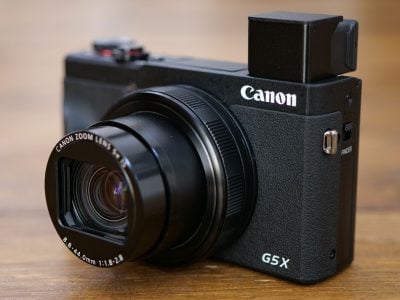Panasonic Lumix DMC-FZ50
-
-
Written by Gordon Laing
Panasonic Lumix DMC FZ50 verdict
At Cameralabs we were very fond of the earlier Panasonic Lumix FZ30. Sporting a great quality 12x optical zoom lens with effective stabilisation along with SLR-styling and a decent level of manual control, there really wasn’t much to complain about.
 |
With this kind of heritage it would surely be hard for Panasonic to go wrong with the FZ50. Simply keep the things which made the FZ30 great and address the few concerns levelled against it. This is exactly what Panasonic’s done, but the end-result isn’t necessarily everything you hoped for.
Looking back at our FZ30 review, our biggest complaint was the relatively modest maximum sensitivity of 400 ISO. Panasonic’s certainly addressed this by increasing the FZ50’s maximum sensitivity to 1600 ISO and even offering 3200 ISO with a High Sensitivity preset. There’s also an intelligent ISO option which upon detecting subject motion can increase the sensitivity to allow a sufficiently fast shutter to freeze it.
While the earlier FZ30 enjoyed a broad degree of manual control, it was annoying to enter menus just to change the white balance or ISO. Now Panasonic’s also fixed that with the FZ50’s Function button which allows you to easily change these and other common settings. It’s even slightly improved on the positions capable with the flippable screen.
And finally because we’re a year or so further down the line, Panasonic’s increased the resolution from 8 to 10 Megapixels. This allows the FZ50 to compete, at least in terms of numbers anyway, with the latest raft of digital SLRs, while also leap-frogging its super-zoom rival, the 9 Megapixel Fujifilm S9500 / S9000.
While these are all admittedly modest enhancements, they are none-the-less enhancements to what was already an award-winning camera. On paper then the FZ50 should be a winner.
In reality though there’s some serious problems. The earlier FZ30’s maximum sensitivity may have only been 400 ISO, but at this point it was already suffering from above average noise levels. Since the FZ50’s sensor shares the same physical area but increases both the sensitivity and resolution, alarm bells inevitably start ringing.
And with good reason too: as seen on our outdoor noise results page, the FZ50 sadly runs into trouble at 200 ISO and above, where ultimate detail is smeared-out by aggressive noise reduction systems; you can turn the noise reduction down, but the results still leave much to be desired. At 400 ISO and above the images begin to resemble impressionistic paintings when viewed at 100%.
Of course you could argue the FZ50’s undesirable artefacts essentially disappear at lower screen magnifications or typical print sizes, but as far as we’re concerned, that’s missing the point. We believe every camera should stand-up to scrutiny at 100% and every single Megapixel should be usable – otherwise, what’s the point in going for such a high resolution sensor? Forcing yourself to shoot exclusively at 100 ISO or treating the camera as if it had half its actual resolution is no way to work.
There are those who’d disagree and say it’s reasonable to learn and work within a camera’s limitations, but where do you draw the line? When we accept working within restrictions this tight, it merely encourages the manufacturers to continue increasing resolutions for marketing purposes at the cost of overall quality. We’d say it’s already gone too far and has to stop.
In its defence though, the FZ50 still has a fantastic lens and excellent creative control, but apart from the new Function button, the best aspects are essentially the same as its predecessor. Sure, the FZ50 may resolve slightly more detail at its lowest ISO, but we’d happily swap this for better performance at higher sensitivities. Certainly if you demand better quality at high ISOs, you’ll be better off with a budget DSLR.
 |
We originally awarded the FZ30 a Highly Recommended, but feel the FZ50 with its compromised image quality above 100 ISO is arguably a step-backwards. For this reason, especially one year down the line, it cannot share the same rating as its predecessor. Indeed if remaining FZ30’s could be picked-up at cheaper prices we’d say go for it instead.
That said, we’re still awarding the FZ50 our Recommended rating simply because despite its problems, it remains one of the best super-zooms around and is available at a compelling price. The zoom range is massive, the optical quality of a very high standard, and thanks to effective stabilisation, it’s quite possible to shoot static subjects under low light at 100 ISO and enjoy excellent results. And remember it’s smaller, lighter and cheaper than most DSLRs while thrashing kit lenses in terms of range, quality and stabilisation, not to mention having no worries over dust. In these respects it’s a great camera, but don’t kid yourself you’ve got 10 Megapixel quality at anything other than the lowest sensitivities.
| ||||||||||||





